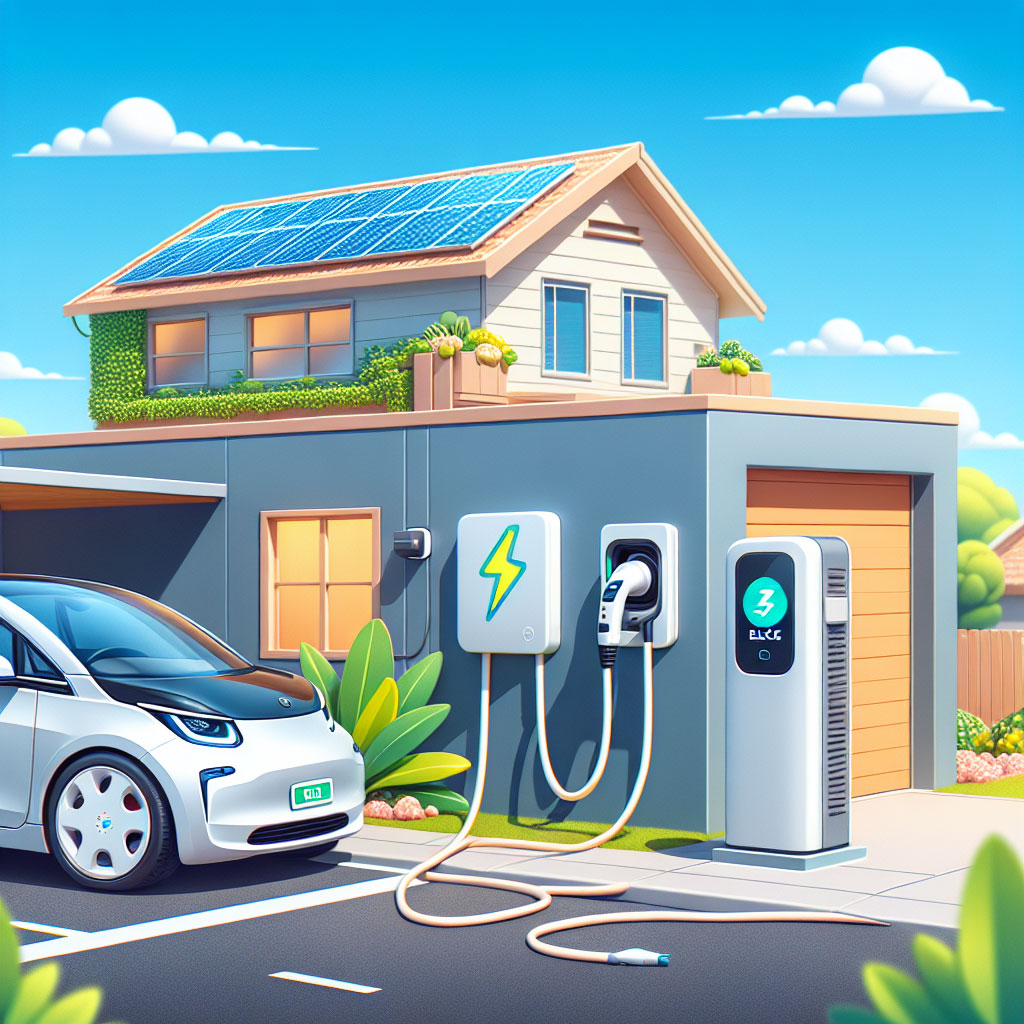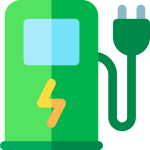
For the first-time EV buyer in Australia, the concept of never visiting a petrol station again is both exhilarating and slightly daunting. The old ritual of ‘filling up’ is replaced by a new, vastly simpler one: plugging in when you get home. This single behavioural shift is the cornerstone of the EV revolution, turning your garage or carport into the most convenient and cheapest ‘service station’ you will ever use.
The true convenience of electric vehicle ownership is unlocked at home. Forget searching for the cheapest fuel price or waiting in line; with home charging, your car fuels itself while you sleep, work, or relax. The key is understanding the two main methods available to you and, crucially, how to make the electricity cost practically disappear with smart energy timing.
1. Understanding the Two Levels of Home Charging
When you buy an EV, you essentially have two options for charging at your residence: Level 1 and Level 2. The difference boils down to speed, convenience, and initial investment.
Level 1 Charging: The ‘Trickle’ Charge
- What it is: Level 1 charging involves plugging your EV’s supplied cable directly into a standard 240V, 10-amp household power socket (a General Power Outlet or GPO).
- The Power/Speed: This method delivers a power output of approximately 2.3kW. In terms of range, this translates to adding only about 10-15 km of range per hour of charging.
- The Pros:
- Zero Installation Cost: You use the equipment that came with the car and the power points you already have.
- Accessibility: You can charge anywhere there is a standard GPO—at a friend’s house, a holiday rental, or even a remote shed.
- The Cons:
- Very Slow: For an EV with a large 60kWh battery, charging from empty to full using Level 1 could take 24 hours or more. While fine for a Plug-in Hybrid Electric Vehicle (PHEV) with a small battery, it’s generally too slow for the needs of a pure Battery Electric Vehicle (BEV) owner who drives regular distances.
- Not the Best Long-Term Solution: It’s best viewed as a convenient backup or for drivers with very low daily commutes (under 30 km).
Level 2 Charging: The Dedicated Wall Box
- What it is: Level 2 charging involves installing a dedicated charging unit (often called a ‘wall box’ or EVSE—Electric Vehicle Supply Equipment) in your garage or carport. This unit is hardwired into your home’s main power supply by a licensed electrician.
- The Power/Speed: Most home installations in Australia are single-phase, delivering around 7kW. This typically adds 30-45 km of range per hour. Some homes with a three-phase connection can install a faster unit, up to 11kW or 22kW, adding even more range per hour.
- The Pros:
- The Gold Standard: This is the recommended primary charging solution. A 7kW wall box can easily replenish the average daily commute (35-50km) in just 1-2 hours. You can routinely fully charge your EV overnight while you sleep.
- Safety and Efficiency: A dedicated circuit is safer and more efficient.
- Smart Features: Most Level 2 chargers are ‘smart,’ allowing you to schedule charging via an app, track energy usage, and even integrate with solar systems.
- The Cons:
- Initial Investment: There is an upfront cost for the unit and professional installation, typically ranging from $1,500 to $3,000 depending on the complexity of the wiring run.
The Verdict: While Level 1 gets you started, a Level 2 wall box is the key to maximising convenience and making an EV feel effortless to run. It allows you to reliably charge while you sleep, ensuring you wake up to a ‘full tank’ every single day.
2. The Smart Strategy: Charging for Free or Near-Free
The real cost-saving power of home charging is not just how you charge, but when you charge. Unlike petrol, the price of electricity changes dramatically throughout the day, offering massive opportunities for savings.
The Off-Peak Tariff Advantage
The average Australian household is usually on a flat rate tariff, paying the same price per kWh regardless of the time of day. However, nearly all electricity retailers offer Time-of-Use (ToU) tariffs, which have three distinct price periods:
- Peak: Mid-afternoon/early evening (the most expensive).
- Shoulder: Daytime and later evening (mid-priced).
- Off-Peak: Late night, typically from 11 PM to 7 AM (the cheapest).
EV charging is a large, predictable energy load, making it perfectly suited for the off-peak period.
- The Calculation: If you pay $0.30/kWh during the day, your cost to drive 100km is around $6.00.
- The Saving: If you switch to a ToU plan and schedule your EV to charge between 11 PM and 7 AM, you might pay as little as $0.08 to $0.12/kWh. This drops your cost to drive 100km to a mere $1.60 – $2.40.
By simply setting a schedule in your car or smart wall box, you avoid peak prices and slash your ‘fuel’ costs to a fraction of the price of petrol.
Solar Integration: The Ultimate Cost Killer
For Australian homeowners with rooftop solar panels, an EV isn’t just a car—it’s a large battery on wheels that can be charged with free, self-generated electricity.
- The Golden Hour: Solar systems generate the most excess power during the middle of the day (typically 10 AM to 3 PM), a time when most people are out of the house and the home’s energy demand is low.
- The Zero-Cost Fuel: If you have solar and can plug in your EV while you work from home, or if you simply schedule it to charge during this sunny period, you are using the excess power your panels generate before it gets exported back to the grid for a small feed-in tariff. In effect, your EV is running on free energy.
- Smart Chargers: Modern wall boxes (like Zappi or Tesla Wall Connector) are designed to communicate with your solar inverter. They can automatically adjust the charging rate to precisely match the surplus power being generated, ensuring you are only ever charging with clean, free sunshine.
3. Key Takeaway: ‘Fuelling’ While You Sleep
The greatest benefit of home charging is not the savings—though they are substantial—but the profound increase in convenience and reduction in mental friction.
The old world required you to stop a necessary journey (your commute, your errands) to perform a chore (filling up). The EV world reverses this:
- Stop the Chore: You charge when the car is already stationary and you are already doing something else (sleeping, working, relaxing).
- Daily Freedom: For the average Australian who drives less than 50km per day, plugging in overnight means the battery is typically topped back up to 80% or 100% by the time you wake up. You start every day with a full ‘tank,’ eliminating the need to ever think about charging for 95% of your driving.
- Ultimate Control: You dictate the price (via off-peak or solar) and the schedule, moving control from the petrol companies to your own energy plan.
In summary, home charging transforms the cost and convenience of owning a vehicle. By investing in a Level 2 wall box and utilising smart charging tactics—solar integration or off-peak tariffs—you move from constantly budgeting for volatile petrol prices to effortlessly and cheaply fuelling your car, making the EV an integrated, affordable, and worry-free part of your Australian lifestyle.
FAQs
Do I need a wall charger to own an EV?
No – you can start with the portable cable supplied with the vehicle and a standard household outlet. However, a dedicated Level 2 wall box is strongly recommended for daily usability, safety and faster charging if you drive regularly.
How much does it cost to charge per 100 km?
Costs vary by vehicle efficiency and electricity price. A typical BEV uses around 15-20 kWh per 100 km. At $0.25-$0.35/kWh that’s roughly $4-$7 per 100 km on a daytime tariff; on cheap off‑peak rates or using solar, that can fall to around $1-$3 per 100 km.
Can I charge my EV from rooftop solar?
Yes. Smart chargers can prioritise surplus solar generation so your car is charged with self‑generated energy. This is one of the most cost‑effective ways to fuel an EV and reduces grid purchases and emissions.
What does installation cost and how long does it take?
Installation costs commonly range between about $800 and $3,500, depending on charger model, cable run length, switchboard upgrades and site complexity. Simple installs can be completed in a few hours; more complex jobs take longer and may require permits or upgrades.
Are there government rebates or incentives?
Some states, local councils and energy retailers offer incentives, rebates or concessional tariffs for EV owners or charger installations. These programs vary and change over time – check your state government websites and your electricity retailer for current offers.
Can I install a charger if I live in an apartment or strata building?
Yes, but it can be more complex. Many jurisdictions have guidance to support EV charging in apartment buildings. Options include dedicated chargers at individual bays, shared charging infrastructure and billing systems. Engage your strata manager early and look for providers experienced in multi‑unit installations.
What is vehicle‑to‑grid (V2G) and is it available now?
V2G (and vehicle‑to‑home) enables an EV to export electricity back to the home or grid. Trials and early deployments are underway in Australia, but widespread commercial availability depends on vehicle and charger compatibility and regulatory arrangements. If V2G interests you, check if your vehicle and charger explicitly support bidirectional charging.
About EV Evolution
EV Evolution is the leading online platform dedicated to Australian electric vehicle owners and enthusiasts. We foster a vibrant community, delivering essential EV news and insights, and enhancing user engagement through our innovative, AI-powered chatbot for dynamic discussions. Our mission is to empower Australian electric vehicle owners and enthusiasts by fostering a vibrant, AI-driven online community that connects, informs, and advances the nation’s electric vehicle landscape.




